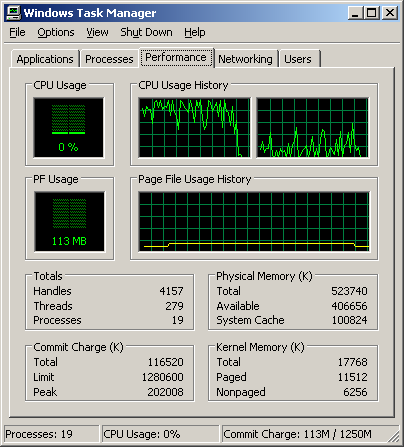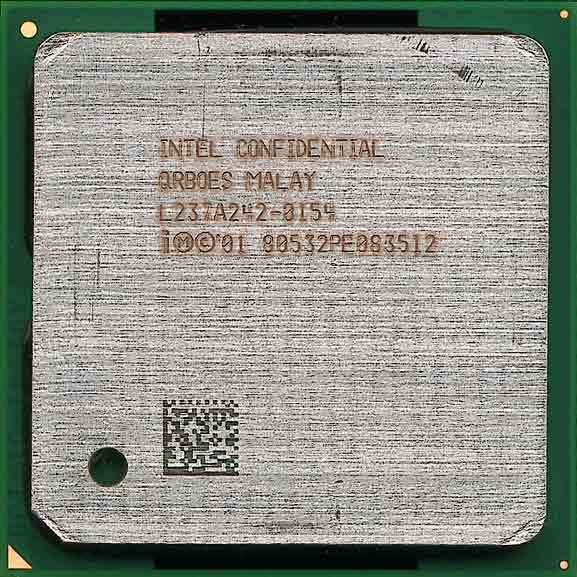Single CPU in Dual Operation: P4 3.06 GHz with Hyper-Threading Technology
Low-Cost Dual Processing: P4 At 3.06 GHz, Continued
Windows XP's Device Manager shows two CPUs.
The evolutionary process has been underway for nearly two years (692 days, to be exact). The first Intel Pentium 4 based on the Willamette core appeared in November 2000. When it was first introduced, it actually ran slower than its predecessor, the Pentium III. Intel initially received a lot of criticism for the P4 with its Netburst architecture, as the high clock speed 1.5 GHz P4 achieved nowhere near the kind of performance that was available from the AMD Athlon 1333. For a long time, it seemed that Intel had saddled itself with the wrong architecture. The P4 simply was unable to keep up with the AMD Athlon in any benchmark tests. Not only that, but against the reasonably priced Athlon, the P4 looked expensive. To make matters worse, the P4 platform had to be used with the outrageously expensive Rambus memory. The situation escalated when the Athlon 1400 was introduced, offering superior performance to the 1700 MHz P4.
The introduction of chipsets with support for DDR marked a turning point for the mass-market's acceptance of the P4. Intel began to leave the AMD Athlon behind in the gigahertz stakes, as it stepped the numbers up even further. Nevertheless, the Athlon still performed well in benchmark tests, at times even edging ahead of its rival. As the AMD Athlon was based on a design that was now over four years old, it became difficult to integrate new technology into the processor. The final stage in its development - the Barton core and larger cache - is currently waiting in the wings. For the time being, however, AMD has lost the race to produce the fastest processor. Intel has already broken the 3 GHz barrier and has introduced new features such as Hyper-Threading and clock-throttling (PROCHOT). It must be said, however, that even Intel developers are highly respectful of the AMD Hammer, which is expected to make its debut at Cebit in March 2003. But the Hammer has now lost the time advantage that AMD had originally envisaged. (The launch was originally planned for 2001.)
Intel Pentium 4 at 3.06 GHz - Hyper-Threading means that certain operating systems (Windows 2000, XP) recognize it as a dual processor system.
Get Tom's Hardware's best news and in-depth reviews, straight to your inbox.
Current page: Low-Cost Dual Processing: P4 At 3.06 GHz, Continued
Prev Page Low-Cost Dual Processing: P4 At 3.06 GHz Next Page Details On The P4 3.06 GHz
